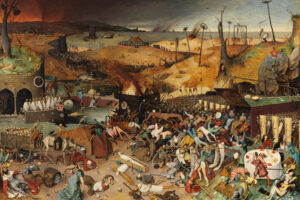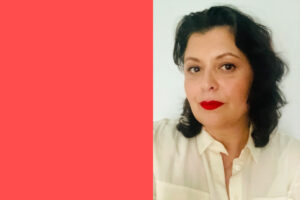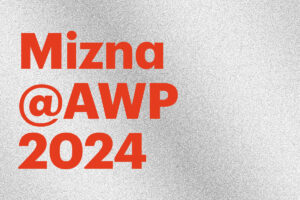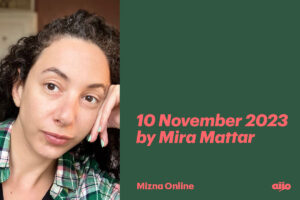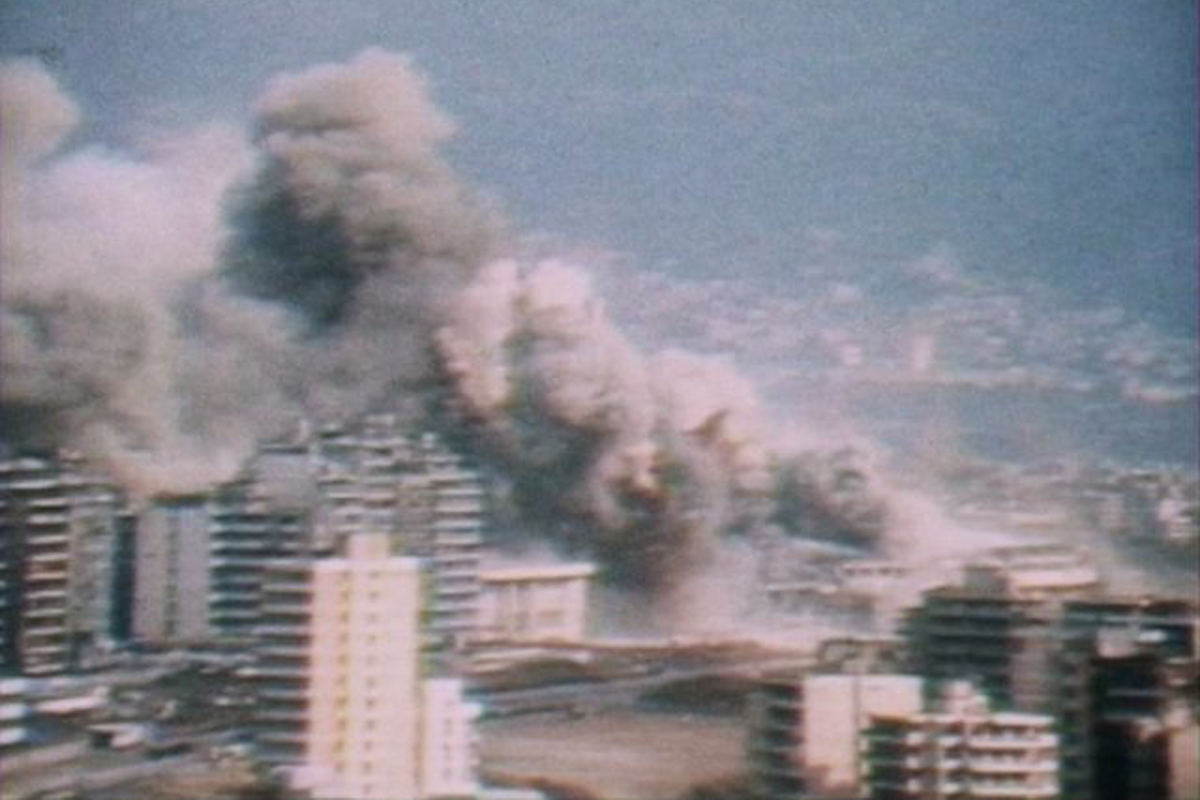
June 22, 2021
A Note on Jocelyne Saab and Screening Violence
Michelle Baroody
This text is presented as part of the Mizna Film Series, a monthly selection which expands our regular film programming to include screenings, critical essays, filmmaker interviews, and discussions exploring revolutionary forms of cinema from the SWANA region and beyond.
On January 7, 2019, Lebanon lost a pioneering filmmaker, journalist, photographer, artist, and political thinker with the passing of Jocelyne Saab. Saab was born in Beirut on April 30, 1948, in the wake of the Second World War, when the Levant underwent numerous changes: Syria and Lebanon became independent from France, Palestinians were displaced by the Nakba of Israel’s violent birth, and Arab nationalism temporarily became a project of decolonization, a socialist struggle against the former and emerging imperial powers of the new world order. Film became a language of resistance, a push against the images of these formerly colonized nations building their own scene out of the pieces. Lebanon turned to the west for economic and political influence, and for a time, the nation’s wealthy thrived on a high of capitalism’s shiny exterior, before the crash of civil war became a dominant and overwhelming reality from 1975 to 1990, and again in 2006 with another Israeli invasion.
Saab was an early auteur of Beirut, filming its concrete structures, detailing its bricks, its corners, its depth, its breadth, its destruction in the 1970s, 80s, and 90s, and its rebuilding after the civil war. Saab’s films dig beneath the layers of colonial glamor and the superficiality of 1960s Beirut, once called the “Paris of the East,” to consider the people who live on this coast of the Mediterranean and inhabit Beirut’s streets, experience its trauma, its beauty, its contradictions. “Like many Lebanese filmmakers of her generation, it was during the early years of the Lebanese civil war (1975–1990) that Saab’s films took root,” Dalia Mostafa argues in her chapter on Saab’s work in Ten Arab Filmmakers: Political Dissent and Social Critique.“The context of war,” Mostafa continues, “ironically, made possible her contribution as a war reporter, journalist, photographer, and filmmaker.”[1] Learning film through documenting violence in Beirut, Saab anticipated and resisted the colonial and western gaze, using poetry, close-ups, and dialogue to challenge repetitive images of the Arabic-speaking world as always in a state of chaos.
The poet Etel Adnan––Saab’s longtime collaborator and the narrator of Beirut, Never Again, the first film in her Beirut trilogy––names Saab as one of Lebanon’s most important and influential filmmakers. Adnan writes:
Jocelyne had managed to convey the atmosphere of the early days of the war. . . . With her political courage, moral integrity and profound intelligence, Jocelyne instinctively grasped the essence of the conflict. . . . [N]o document on that war ever rivalled the three films Jocelyne made about Lebanon. Hers is a rare and precious oeuvre, valuable for the history of Lebanon but also for its relevance beyond its borders; it should be part of university courses on contemporary sociology and politics.[2]
Many of Saab’s films center on Beirut, but as Adnan describes, her cinematic “oeuvre” extends beyond the artificial borders of the city and the nation. Saab’s political and social critiques begin in Lebanon, but her documentary work took her across the Arabic-speaking world. From an interview with Mu‘ammar al-Qaddafi to an intimate day on the Mediterranean Sea with Yasser Arafat and the PLO, Saab’s early films capture revolutionary Arab leaders as well as children and women training to join the resistance, exemplified in Children of War (1976) and Palestinian Women (1974).
Mostafa argues that after the release of What’s Going On?, Saab’s feature-length narrative from 2010, the filmmaker wanted to film the city as no one sees it “in this age of globalization, where everything looks the same.”[3] Saab suggests, “‘The city has become dull. I’m the one who has filmed the city as beautiful, the beauty which no one is able to see anymore.’”[4] While Saab refers to the city in 2010––decades after the moments she filmed in the 1970s and 80s––her remarks speak to the Beirut she filmed in her days as a journalist, capturing young Lebanese children and Palestinian women committed to the struggle, images of Beirut in ruins amidst ongoing unrest during what’s typically dubbed a civil war. In her work, Saab has always filmed a version of Beirut that is completely her own––from the present or the past, between fact and fiction.
Our summer series focuses on Beirut, coinciding with and remembering the one-year anniversary of the devastating Beirut Port explosion by presenting documentary footage of the city at various moments in the past five decades. In particular, we look at films that recall, reconstruct, and capture the beauty and destruction in the city’s history and its present, imagining a different future. In Lebanese cinema after the civil war, there is often a rehearsal of the archive, a repetition of war’s trauma, its ruptures, and its wounds. While some might argue the war fashioned the cinematic impulse in Lebanon, we highlight the work of filmmakers like Saab whose works show us what that impulse looks like through the eyes of those who experienced it, rather than those who simply reported it. Saab’s films resist catharsis for the audience, refusing the viewer an easy identification with the images they see onscreen.
“I began by making film reports, documentaries, and I didn’t come to fiction until much later,” Saab explained in 2010. “The boundaries between the two aren’t very clear-cut, however, and there are often documentary elements in fiction films and vice versa.”[5] Capturing reality while also calling continual attention to the ways in which film constructs our reality through images, a picture of fact that is shaped, framed, and edited by the filmmaker, Saab’s work seizes moments in Beirut’s history without declaring them undeniable or eternal fact. Her films make the viewer aware of the filmmaking apparatus and the ways that the camera’s lens mediates reality––the images are real, but Saab does not show them for sympathy, for a passing interest in cathecting to something one has seen onscreen and then moving beyond it. Instead, she brings focus to the situation of Beirut, in the 1970s, 80s, or the 2000s, making films that take the time to consider the possibilities of the city rather than lingering on its destruction.
That said, Saab’s films often contain graphic images of suffering and violence perpetrated on men, women, and children. At Mizna, we are careful when screening images of war and violence. Programming works from and about Southwest Asian and North African (SWANA) artists and lives, we must constantly grapple with what it means to put certain stereotypes and narratives on display, always thinking through how we might tell the very real story of violence during the Lebanese civil war, for example, without reproducing the idea that “they’ve just been at war for centuries over there.” Much of the time, we skip images of gratuitous violence, because they do little more than reproduce onscreen western essentialisms about “the Middle East”; they reiterate the western fantasy that endless war is a result of desert temperaments and ancient religious feuds, rather than colonialism, resource extraction, western foreign policy, and capitalist greed. We often ask ourselves, how do we put images of violence and war, past and present, onscreen without reproducing well-worn ideas about life in the SWANA region? How do we balance the need for a larger audience to see destruction and cultivate solidarity without reproducing violence to bodies and places? And how do we move beyond representing violence to seeing what emerges from resilience, resistance, and ruins?
When we view documentary films, we have the experience that we are seeing into the lives of others, as if we are witness to an unmediated view of their world and its hardships, its rhythms. We feel like we’ve really accomplished something by understanding the situations of the downtrodden, or we’ve achieved glory by witnessing the triumphs of those onscreen. Filmmaker Jill Godmilow captures this mode of passive spectatorship and its dangers in an interview from 1997, when she suggests:
The audience is invited to believe: “I learn from this film because I care about the issues and people involved and want to understand them better; therefore, I am a compassionate member of society, not part of the problem described, but part of the solution.” The documentary film knits us into a community of “we”––a special community by dint of our knowledge and compassion . . . The real contract, the more hidden one, enables the viewer to feel: “thank God that’s not me.” Thank God that’s not me, saddled with two Downs syndrome children and on welfare, or dying of AIDS, or downsized out of a job, and, in the historical film, thank God that’s not me who had to send all three sons from our struggling Illinois family farm to fight to the their death on the battlefield of Gettysburg.[6]
Or perhaps, in the streets of Beirut. Susan Sontag’s well-known critiques in Regarding the Pain of Others resonate with Godmilow’s warning, as she argues that “photographs of the victims of war are themselves a species of rhetoric. They reiterate. They simplify. They agitate. They create the illusion of consensus.”[7] Calling attention to discourses of fact and fiction in documentary images, both Godmilow and Sontag articulate something important about the ways that audiences engage with the pain and death of others in photographs and film, and they argue that passive spectatorship allows these images to become tied to the very rhetoric that creates and reproduces violence: they “reiterate” and “simplify.” In the context of a place like Lebanon, images of war and violence repeat and reproduce well-worn narratives of destruction, and more dangerously, they create an “illusion of consensus” for those who see certain representations of this violence, because they insist on a type of viewing that produces a false sense of solidarity among viewers while actually just creating a feeling of “Thank God that’s not me.”
Saab’s films, and the films in this summer’s Beirut-focused film series refuse this kind of passive spectatorship, and they ask the viewer to engage with their own practices of looking. Comparing Saab’s work to that of Egyptian director Oussama Fawzi, who died within two days of Saab in January 2019, Joseph Fahim writes that both filmmakers “presented confrontational portraits of their home countries. Their films deviated from convention, combining raw realism with surrealism while shattering stereotypical representations of their nations.”[8] He argues that “[i]n her Beirut trilogy – Beirut, Never More (1976), A Letter from Beirut (1979) and Beirut, My City (1982), [sic] Saab began her career-long quest of probing the individual’s relationship with their cities, including their fictitious histories, their uncertain present and their profound psychological impact.”[9] These films are not for passive consumption, they are meant to “probe” the viewer’s notion of fact and fiction––they are not meant to educate, but “deviat[e] from convention” by blending reality with its most “surreal” moments, making the viewer consider their own complicity and position as a spectator to violence.
According to Saab, she belonged to “the generation that started looking for our roots, looking to see why we lost them.”[10] At Mizna, we began planning this film series to honor that impulse and to make space for the mediations of Beirut’s auteur, who passed away before the pandemic further exposed the incredible inequalities many of us ignore in our daily lives and before an explosion in Beirut’s harbor, during waves of anti-government protests and rising COVID-19 cases, transformed (and continues to transform) Beirut’s cityscape. Recognizing the importance of her work, the Association des Amis de Jocelyne Saab, a volunteer-run nonprofit, has worked for multiple years toward “the restoration and the wide dissemination of the artistic heritage of French-Lebanese artist Jocelyne Saab.”[11] We are thrilled to partner with this organization to present some of Saab’s early documentary films. Alongside Saab’s films, we have programmed the work of contemporary filmmakers who take the same time and care in filming Beirut in the past and the present, artists like Mai Masri, Jean Chamoun, Ghassan Salhab, and Jalal Toufic. This summer series honors these filmmakers as much as it honors Beirut and all of its encounters.
Saab’s films Children of War (1976) and Palestinian Women (1974) screen with Mai Masri and Jean Chamoun’s War Generation: Beirut (1988) in June, and Saab’s Beirut trilogy, including Beirut, Never Again (1976), Letter from Beirut (1978), and Beirut, My City (1982) screen together in July. See https://mizna.eventive.org/welcome for virtual tickets and trylon.org for in-person screenings.
[1] Dalia Said Mostafa, “Jocelyne Saab: A Lifetime Journey in Search of Freedom and Beauty (Lebanon),” Ten Arab Filmmakers: Political Dissent and Social Critique, Ed. Josef Gugler (Bloomington, IN: Indiana UP, 2015), 35.
[2] Etel Adnan, “For Jocelyne,” Out of the Shadows: Jocelyne Saab, from Sabzian, 2014, https://www.sabzian.be/text/for-jocelyne
[3] Mostafa, “Jocelyne Saab,” 44.
[4] From Mostafa, “Jocelyne Saab,” 45.
[5] Olivier Hadouchi, “Documenting and Telling the Torments of the World,” Out of the Shadows: Jocelyne Saab, trans. Sis Matthé, from Sabzian, 2014, https://www.sabzian.be/text/documenting-and-telling-the-torments-of-the-world
[6] Jill Godmilow and Ann-Louise Shapiro, “How Real Is the Reality in Documentary Film?,” History and Theory 36, no. 4 (December 1997): 83, https://www.jstor.org/stable/2505576
[7] Susan Sontag, Regarding the Pain of Others, (New York: Picador, 2003), 6.
[8] Joseph Fahim, “A tale of two film mavericks: Jocelyne Saab and Oussama Fawzi,” Middle East Eye, January 24, 2019, https://www.middleeasteye.net/features/tale-two-film-mavericks-jocelyne-saab-and-oussama-fawzi.
[9] Fahim, “A tale of two film mavericks.”
[10] Rebecca Hillauer, “Jocelyne Saab,” Encyclopedia of Arab Women Filmmakers, trans. Allison Brown, Deborah Cohen, and Nancy Joyce (Cairo: The American University of Cairo Press, 2005), 173.
[11] “Association des Amis de Jocelyne Saab––Jocelyne Saab’s Friends Association,” Association des Amis de Jocelyne Saab, accessed June 19, 2021, https://jocelynesaabasso.com/.

Michelle Baroody holds a Ph.D. in Comparative Literature from the University of Minnesota. Her research and teaching interests include archival studies, film history and theory, and Arab American studies. She has worked with Mizna’s Arab Film Festival from 2012 to 2020 in various capacities: as curator, director, coordinator, and volunteer. She has programmed several Arab and Arab American film series and screenings in the Twin Cities, and she is a board member at the Trylon Cinema in Minneapolis and co-editor of the Trylon’s blog, Perisphere. She currently teaches Social Studies at The Blake School in Minneapolis. Her scholarship, pedagogy, and programming rethink how the production, collection, exhibition, and international circulation of Arab/Arab American film and literary texts mediate the representation of Arab/Arab American life.
Michelle is the Film Programming Curator at Mizna.





